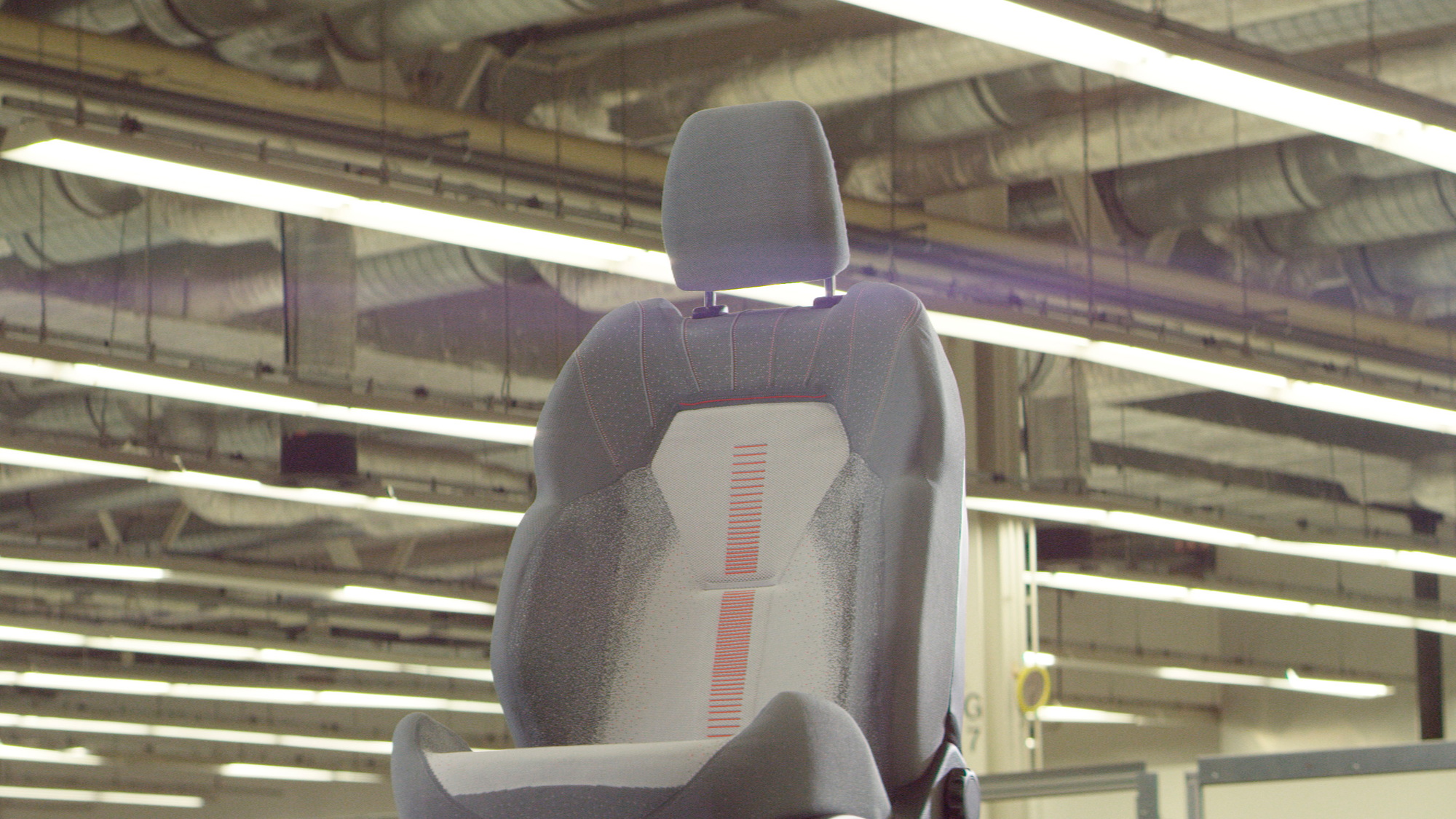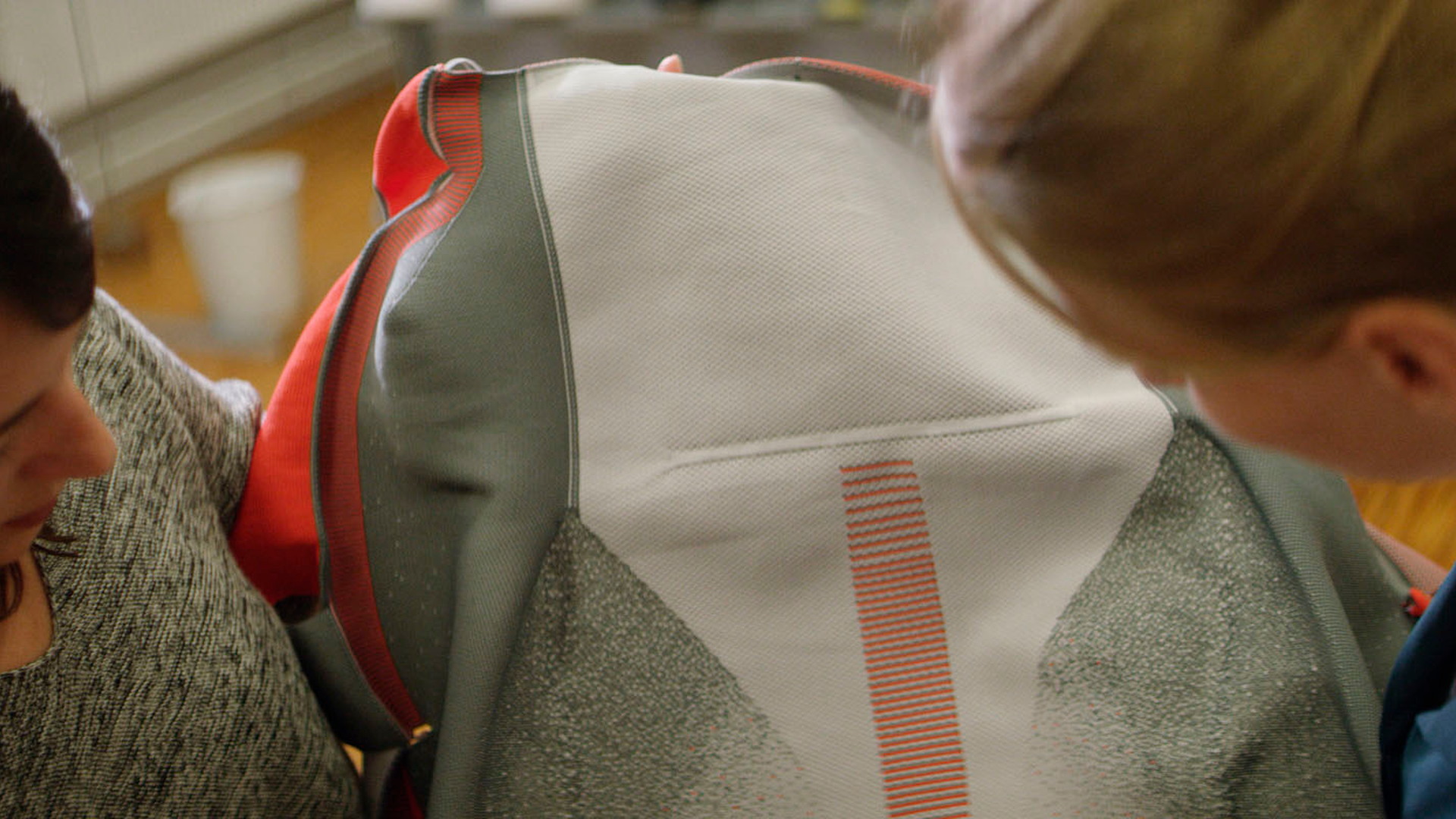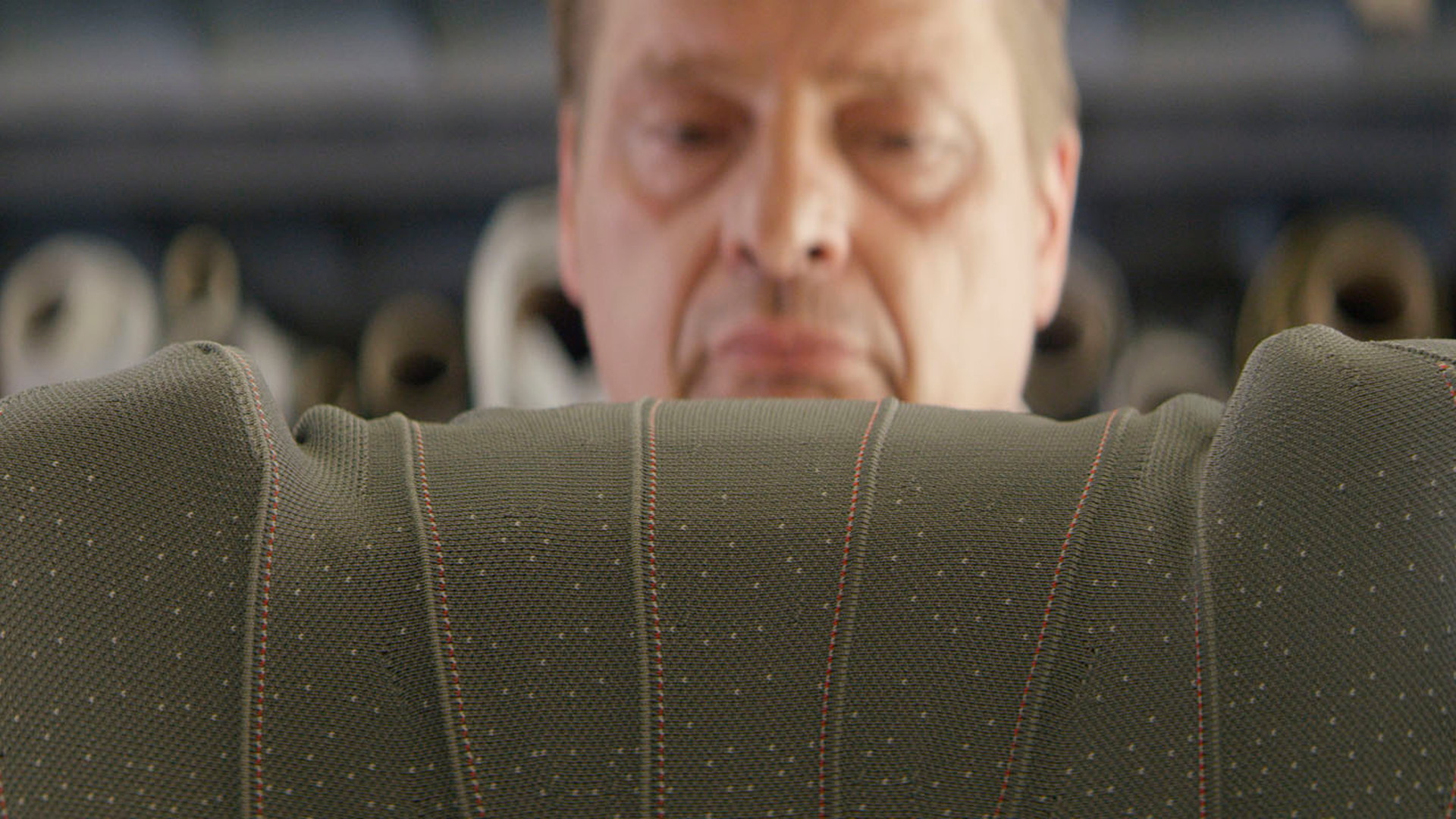Imagine a seamless, fray-proof fabric seat cover made to your exact specifications, with a perfect fit and zero custom fabrication required. Ford of Europe showed off technology capable of doing just that at its Design Workshop 2019.
Even better, 3D knitting isn't dependent on specific plastics. Ford says it can weave traditional fabrics—such as wool or silk—or even metals. Integrating conductive metals into a 3D knitted weave could allow Ford to integrate heating or charging elements—or even accessory controls—right into a seat cover. A simple contact patch could control a seat's heating element. A pocket on the side of a seat could wirelessly charge a smartphone.
"Think 3D printing with wool, polyester or even silk and you have a finished design that fits like a glove, or better than a glove, because there are no seams to snag or fray," Ford's brief says. "It also opens up a whole world of personalization."

Ford 3D knitted seat covers

Ford 3D knitted seat covers

Ford 3D knitted seat covers
By personalization, Ford says the technology could let people change the colors of different seats, use special seat covers made for pets, and create regional and seasonal designs.
As 3D printing has become more sophisticated and capable of producing objects in a wider range of materials, the technology has been embraced by the automotive industry. The capability of printing metal parts has made the process significantly more appealing, and multiple automakers have invested in the technology.
Porsche has been printing replacement parts for its legacy models for years now. The company stresses that it will not sell parts that don't meet the company's original specifications and durability requirements, but its engineers have found that the 3D-printed replacements have often outperformed those benchmarks.
Mercedes-Benz has likewise begun printing replacement parts made out of metal, and Bugatti has been testing 3D-printed components in high-performance applications. A 3D-printed titanium brake caliper withstood temperatures approaching 2,000 degrees Fahrenheit under test conditions last year.





